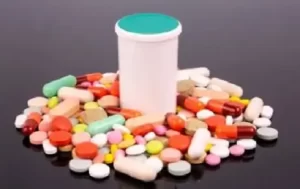INTRODUCTION: The Indian pharmaceutical companies are in a unique position where they are balancing the…
The Colours in Pharma industry
Introduction
Emergency use products such as inhalers also possess an inherent “stickiness” factor, as patients are unlikely to switch to a different brand easily once they have grown accustomed to using a specific inhaler, especially in urgent situations. For example, a parent of a child with asthma would not risk any confusion when searching for and administering an inhaler during an asthma attack. This is also applicable to older patients, busy individuals, those with visual impairments, and those who may have limited English proficiency. If a monopoly exists over the inhaler’s color, these patients are unlikely to take the risk of using an inhaler of a different color than the one they have been using for a long time, as they may not remember the correct color of the new inhaler.
In 2019, the European Court of Justice addressed this issue when it rejected GlaxoSmithKline’s claims that Sandoz was confusing consumers by using the same purple color on their inhaler products. Glaxo had introduced a Dry Powder Inhaler (Seretide Accuhaler) in 1999 and a Metered Dose Inhaler (Seretide Evohaler) in 2000, both of which were available in purple and white and various dosage units. When Sandoz introduced its generic version (AirFluSal Forspiro), it came in a fixed dosage and proprietary inhaler, also in purple and white. Glaxo, who had earlier lost the trademark for the color purple on their inhalers (which was later upheld again in 2020), attempted to convince the court that the similar color scheme would confuse consumers, but failed. Sandoz was able to successfully argue that several other inhalers containing the same active ingredients were also sold in purple and that different colors denoted inhalers containing different types of medications.
[Image Sources : Shutterstock]

To help patients differentiate between different active pharmaceutical ingredients (APIs), Glaxo’s Accuhalers utilized different color combinations. For instance, purple was used for the above APIs, blue for Salbutamol, green for Serevent, and orange for Flixotide. This distinction allowed patients to identify their medication without having to remember the complicated names of their medicinal products.
The lack of adequate regulation surrounding trademarks and trade names for pharmaceuticals has already led to dangerous confusion. For instance, Olvance is a brand name for an antihypertensive medication, Olmesartan, while Oleanz is a brand for an antipsychotic medication, Olanzapine. Both have been approved by drug regulators and have been known to cause confusion. Despite several courts drawing attention to this type of confusion, such as in Cadila v. Cadila paragraphs 22-27, little has been done to improve the situation.
In the case of Cipla v. MK Pharmaceuticals (2007), the Delhi High Court emphasized that there cannot be a monopoly over the shape and colour of pharmaceutical products. Although the court’s statement was correct, it then delved into issues related to the quality and nature of medicines, which are unrelated to the Trade Marks Act. The court would have been correct in affirming that trademarks merely indicate the source of goods. However, in Pfizer v. Mittal Nathalal Patel (2014), the Delhi High Court considered the shape and colour of Pfizer’s “little blue pill” as a ‘trade dress,’ even though consumers do not actually see the pills when they are sold or purchased. The lack of clarity on this point is a matter that needs to be addressed in future orders.
If drug regulators are fulfilling their responsibilities, the branded and generic versions of drugs are completely interchangeable. It is crucial to avoid artificial obstacles such as monopolies over product recallability (through packaging, visual impression, etc) that may hinder this interchangeability due to competition concerns. In 2015, the US FDA published a (non-binding) guidance document for the pharmaceutical industry emphasizing that they were worried about variations in physical characteristics (e.g., size and shape of the tablet or capsule) potentially impacting patient compliance, acceptance of medication regimens, or causing medication errors.
Conclusion
It may be worth exploring new policy proposals, such as introducing uniform color schemes for similar drugs. This would not only help patients in identifying the medications they are taking, but it could also assist pharmacists in distinguishing between drugs that have similar names or appearances. Another unconventional approach could be to require that branded names, which benefit from market exclusivity during the initial years, are converted into generic names after the patent expires. Regardless of which suggestions are ultimately adopted, it is essential to prioritize the public interest and reconsider traditional norms around product design and packaging to identify alternatives that maximize social welfare.
Author : Tanya Saraswat, in case of any queries please contact/write back to us via email to [email protected] or at IIPRD.
References
- https://spicyip.com/2021/04/the-monopoly-purple-colours-shapes-and-sizes-in-the-pharmaceutical-world.html
- https://jamanetwork.com/journals/jamainternalmedicine/fullarticle/1487287



